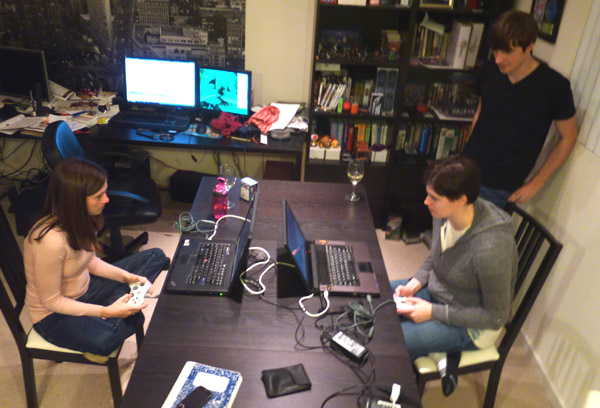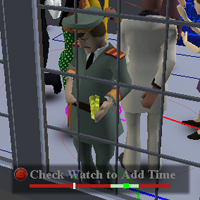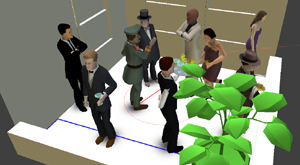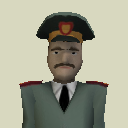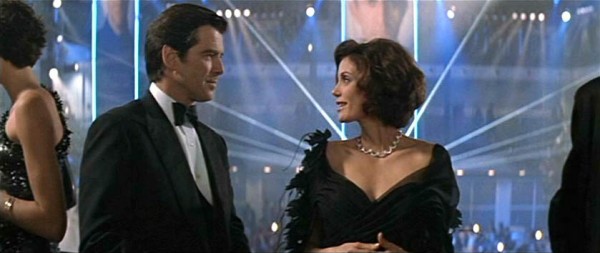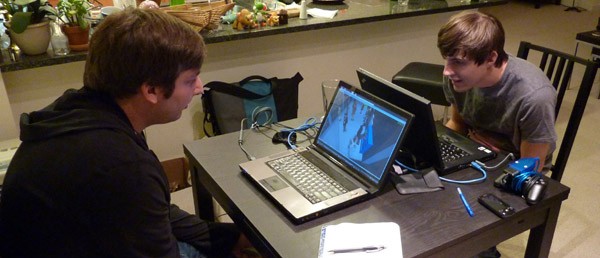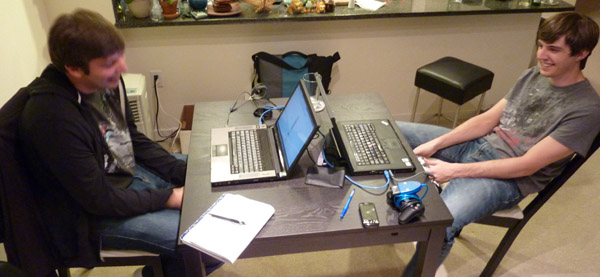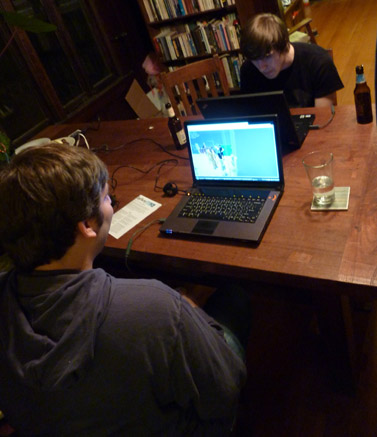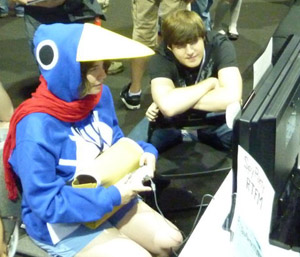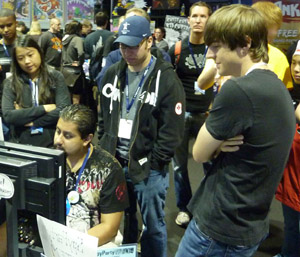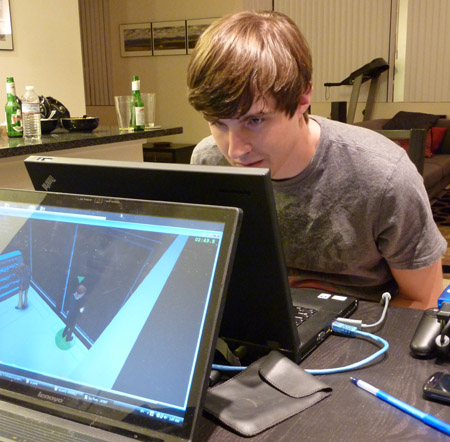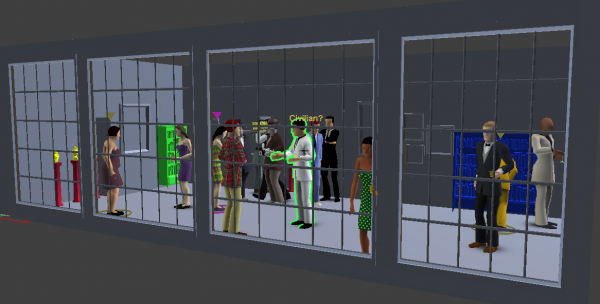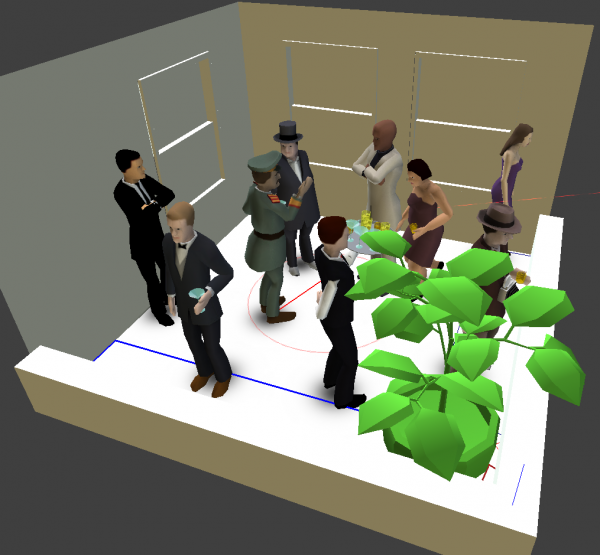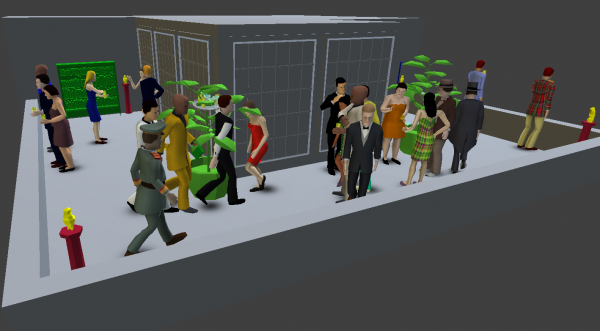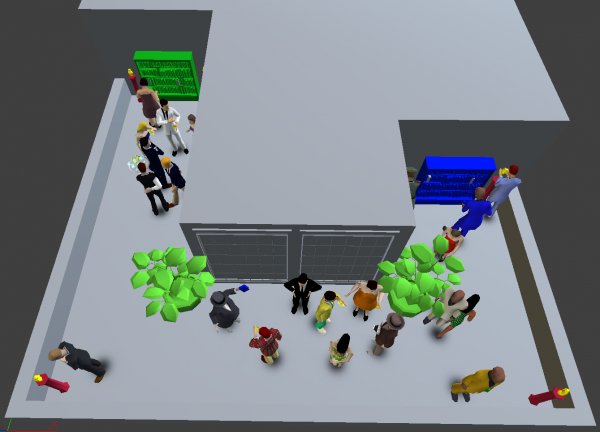Seduction on the Balcony
GDC fast approaches, and I’m trying to make sure all the new stuff I’ve added actually works as designed for people coming to play in the IGF Pavilion, and that means playtest → tune → playtest → tune…
Last night the gang came over, ostensibly to playtest the entirety of the aforementioned stuff, but the damned playtesters wouldn’t stop playing The Balcony map. Over and over again. If you recall, The Balcony was almost meant as a throwaway silly experiment. I was slamming the tuning knobs of map size and complexity from one side to the other with The Balcony and The Veranda just to see what would happen. However, after the last playtest, I made a bunch of tuning changes to the Seduce Target and Contact Double Agent missions that have sort of inadvertently made The Balcony a somewhat balanced experience.
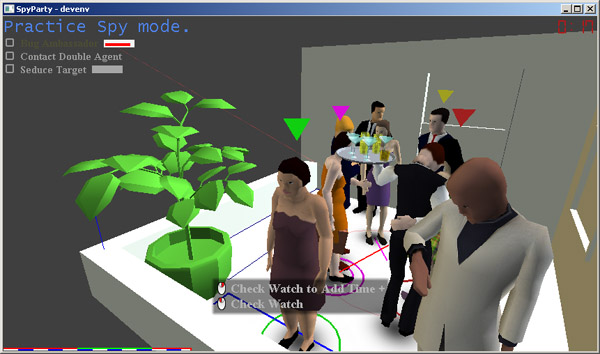
The Balcony, in Practice Spy mode.
The changes I made look like this:
- Seduce Target – You can now flirt with the target just about anywhere people congregate on the map, including at the windows, bookshelves, and statues, not just in conversations like last playtest. There is now an analog “flirt bar” that fills up as you flirt1, instead of having a fixed number of required flirtations, with the distance the Spy is from the Target multiplied by the Action Test determining how much credit you get for each flirtation. It’s tuned right now to require two perfect flirtation attempts while standing right next to the Target, three if they’re just okay flirts, and four and six flirtations, respectively, if you’re far away on the other side of the conversation circle. Since this change is hot off the press, there is currently absolutely no animation tell if you flirt while not in a conversation…you don’t even make a move, the only tell is the behavioral one of being near the same person multiple times. Eventually2 there will be conversations that can happen everywhere, and so flirting will at least require being in a conversation, even at the windows.
- Contact Double Agent – I made it so the map could specify the number of Suspected Double Agents visible to the Sniper, and this number could go all the way to zero, and then I set it to zero on The Balcony. Normally, the Sniper can discount all of the Suspected Double Agents since they (currently) can’t be the Spy. This is a nice head start on eliminating suspects, which is a key part of Sniper gameplay. Plus, since the Sniper knows one of the Suspected Double Agents is in fact the real Double Agent, when the Sniper hears the “banana bread” audio tell, he or she can look around at the various conversation groups and pay more attention to the ones with Suspected Double Agents in them.
These two changes took the map from a quick Spy deathtrap into a relatively more balanced but still quick SpyParty-lite experience. In fact, since the Sniper can concentrate on everyone simultaneously, it becomes a fairly high level behavioral map. Instead of looking for tells, the Sniper can really watch for the “burgeoning relationship” of Seduce Target, or somebody who appears to be going out of their way to walk by the Ambassador. It’s also much less stressful for the Sniper than the big maps, where statue memorization and book tracking are important but taxing skills.
One thing I didn’t mention is I’ve codified the current game types into Call Your Shot, Subset, and Opportunistic Subset, where Call Your Shot means the Sniper knows which missions the Spy is going to attempt, Subset means the Sniper knows only the set of missions from which the Spy will attempt a smaller subset, yet the Spy must pick this subset before play, and Opportunistic Subset is like Subset but the Spy can pick the missions on the fly while playing based on opportunity. Obviously these are in order of increasing difficulty for the Sniper.
On The Balcony, if you know the Spy is doing two Call Your Shot missions, one of which is a subtle mission like Bug Ambassador or Seduce Target, and you hear the “banana bread” tell of Contact Double Agent, you pretty much have to take a shot within 10 seconds or risk losing because chances are the Spy has already done the other mission, so it becomes an interesting almost-arcade version of SpyParty, but that is still about perception and deception.
In fact, after a couple hours of The Balcony, we switched to The Ballroom, and it felt all serious and stressful, way more than it did in the past. I hope The Balcony hasn’t ruined the playtesters! On the plus side, it’s great that I can lighten the intensity of the game on some maps while still retaining the core aesthetic of the game.
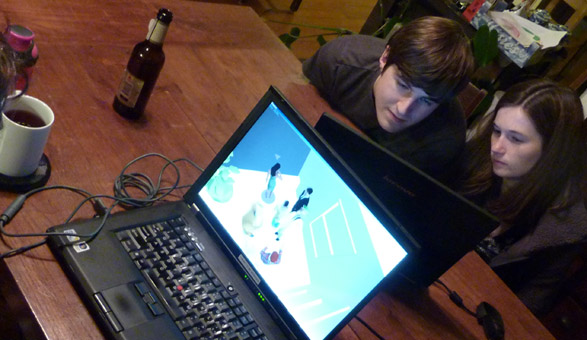
Ian and Lauren trade the controller under the table, so Rachel never knows who she's playing!
After playing The Ballroom a bit more, we talked about how it seemed like some missions worked better on some maps, and how general the missions would be. From a production standpoint, I need to be able to share missions across maps, and that’s proving to be true, but there do seem to be affinities between them. Time will tell how plug-n-play the missions are. Some customization per map is great, doing all custom missions for every map is a non-starter, so hope for the best. :)
I leave you with some SpyParty trash talking courtesy of Ian, Master Sniper:
Lauren, trying to learn from Ian while watching him play: “Why did you highlight that girl?”
Ian: “Because she was the Spy.”


